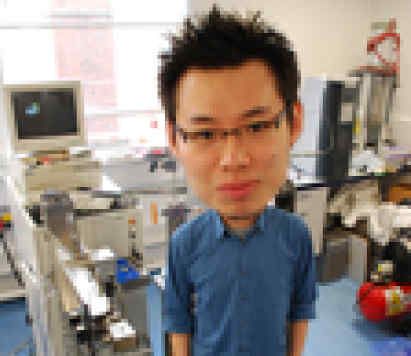BibTex format
@article{Ketola:2022:10.1021/acsapm.2c01248,
author = {Ketola, AE and Song, W and Lappalainen, T and Salminen, K and Viitala, J and Turpeinen, T and Miettinen, A and Lee, K-Y and Ketoja, JA},
doi = {10.1021/acsapm.2c01248},
journal = {ACS Applied Polymer Materials},
pages = {7685--7698},
title = {Changing the structural and mechanical anisotropy of foam-formed cellulose materials by affecting bubble-fiber interaction with surfactant},
url = {http://dx.doi.org/10.1021/acsapm.2c01248},
volume = {4},
year = {2022}
}
RIS format (EndNote, RefMan)
TY - JOUR
AB - Cellulose fiber materials suitable for filtering, insulation, protective, and hygiene applications can be formed using aqueous foam as a carrier phase. The subtle fiber–bubble interaction provides a tool which can be utilized to alter both structural and mechanical material properties. Earlier model surface studies have only indicated clear surface-bubble adhesion when both the surface hydrophobicity and surface tension of the solution are high enough. In this work, we first show that for silica model surfaces these basic mechanisms are similar for both nonionic polyethylene glycol sorbitan monolaurate (Tween 20) and anionic sodium dodecyl sulfate (SDS) surfactants. In the second step, thick nonwoven materials were foam formed from hydrophilic or hydrophobic viscose fibers using small amounts of cellulose microfibers (CMFs) to form a bonding agent. There was a clear variation in structure and strength properties between the samples made using different fibers and surfactants. The partial alignment and layering of fibers in the wet foam led to anisotropy in the mechanical properties of the formed samples. Using SDS, the fiber alignment was very strong for hydrophilic fibers but was reduced for hydrophobic fibers because of stronger coupling to bubbles during structure forming, impacting the microscale fiber network. For nonionic Tween 20, in addition to surfactant adsorption on the fibers, the ethoxylated surfactant headgroups are suggested to form bridges between CMFs and other fibers, restricting fiber movements during formation. For hydrophilic fibers, this showed up as a lower in-plane compression modulus but higher transverse strength for Tween 20 compared with SDS surfactant. For hydrophobic fibers, the sensitivity of the mechanical properties on surfactant type was even stronger.
AU - Ketola,AE
AU - Song,W
AU - Lappalainen,T
AU - Salminen,K
AU - Viitala,J
AU - Turpeinen,T
AU - Miettinen,A
AU - Lee,K-Y
AU - Ketoja,JA
DO - 10.1021/acsapm.2c01248
EP - 7698
PY - 2022///
SN - 2637-6105
SP - 7685
TI - Changing the structural and mechanical anisotropy of foam-formed cellulose materials by affecting bubble-fiber interaction with surfactant
T2 - ACS Applied Polymer Materials
UR - http://dx.doi.org/10.1021/acsapm.2c01248
UR - https://www.webofscience.com/api/gateway?GWVersion=2&SrcApp=PARTNER_APP&SrcAuth=LinksAMR&KeyUT=WOS:000861657600001&DestLinkType=FullRecord&DestApp=ALL_WOS&UsrCustomerID=1ba7043ffcc86c417c072aa74d649202
UR - http://pubs.acs.org/doi/10.1021/acsapm.2c01248
UR - http://hdl.handle.net/10044/1/100835
VL - 4
ER -
